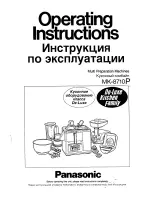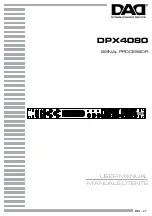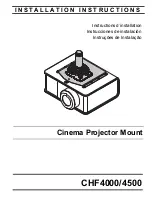
6
Practical Operation
STYLE: Generates harmony by itself
The harmony is decided by setting the KEY and assigning the harmony pattern (STYLE), such as Unison,
Octave, 3rd, 5th, etc., to each harmony part. The STYLE has the Preset Styles and, in addition, the User
Styles. The STYLE can be edited and saved.
This makes it easy to set the harmony using with 1 or 2 harmony voices.
CHORD: Generates harmony by itself
The harmony is decided by setting the KEY and by selecting one preset CHORD out of 50 harmony
patterns (CHORD). It is similar to STYLE but not necessary to assign the harmony patterns to each
harmony part. Selecting just one CHORD sets the harmony of all harmony parts. The CHORD can be
edited to create more complex harmonies and the edited CHORD can be saved.
MODAL: Generates harmony based on MIDI note information received
The harmony is generated by setting the KEY, TEMPLATE (specifies the interval, unison, 3rd, 5th, etc.)
and VOICING (specifies the harmony pattern) and receiving the root note of the harmony via MIDI from
the external MIDI keyboard. The appropriate harmonies can be made by specifying just one root note
from the external MIDI keyboard for the songs of a simple chord progression to the very complex one.
FLEXICHORD: Generates harmony based on MIDI note information received
The harmony appropriate to the input sound is generated automatically based on the MIDI note informa-
tion of 3 or more notes received from the external MIDI keyboard or Sequencer. The appropriate harmo-
nies can easily be made by just playing the chord on the keyboard.
MONO CHN.: Generates harmony based on MIDI note information received
The harmony is generated by receiving the MIDI note information of each harmony on separate MIDI
channels.
This mode is useful when using the external sequencer where the harmony data are recorded on the
separate tracks on separate MIDI channels for each harmony. By using the sequence data, each har-
mony can be controlled individually.
WAIT ALL: Generates harmony based on MIDI note information received
The harmony is generated based on the MIDI note information of one to four notes received from the
external MIDI keyboard. The harmony is generated when the MIDI note information of designated number
of notes is received. As this allows the player to decide which part to play which harmony, the sophisti-
cated harmonies can be assigned in real time, but it always requires the entry of designated number of
MIDI note chords.
PRIORITY: Generates harmony based on MIDI note information received
The harmony is generated based on the MIDI note information of one to four notes received from the
external MIDI keyboard. Not like in WAIT ALL mode, it is easier to use as the harmony can be generated
with only one MIDI note received, but the harmony part changes depending on the order of MIDI notes
played for the chord.
Содержание HV 10
Страница 1: ...HARMONY PROCESSING UNIT...
Страница 38: ...30 Appendix...
Страница 39: ...31 Appendix 3A 3B 3C 3D 3E 3F 3G 3H 5A 5B 5C 5D 5E 5F 5G 5H...
Страница 42: ...Printed in Japan...















































